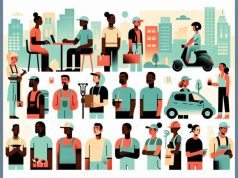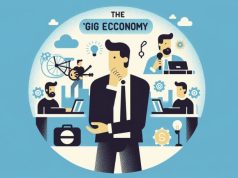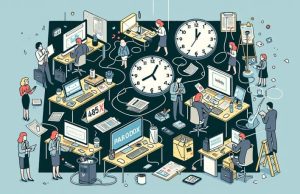The rise of the gig economy has brought with it the allure of a work-life reimagined: flexibility, freedom, and the opportunity to be your own boss. The vision is undeniably appealing—throw off the shackles of the traditional 9-to-5 job and you gain the ability to choose when, where, and how you work. But as this modern labor market matures, a troubling question emerges: is this promise of financial independence a reality for most gig workers, or a well-crafted mirage that obscures the hidden costs lurking beneath?
The Gig Economy’s Initial Promise: An Overview
———————————————
When gig platforms first hit the scene, they were hailed as revolutionary. Workers disillusioned with inflexible schedules and glass ceilings saw platforms like Uber, TaskRabbit, and Upwork as avenues to control their careers. The initial pitch was seductive: choose gigs that match your skills, work as much or as little as you want, and build a portfolio of diverse experiences.
The Reality of Gig Work: Unveiling the Costs
——————————————
As the gig economy has evolved, so has our understanding of its implications for workers. The flexibility narrative is compelling, but it doesn’t pay the bills. This new work structure often comes without the traditional safety nets of employment—health insurance, retirement plans, paid leave, and unemployment benefits are typically non-existent.
The income instability inherent in gig work can be crippling. A slow month or a sudden change in a platform’s algorithm can mean the difference between paying rent or facing eviction. The precarious nature of this work also can lead to psychological stress, with gig workers constantly on the hunt for their next job, never sure of when the next paycheck will come.
Many gig workers find themselves trapped in a cycle of short-term earnings over long-term financial health. Without employer contributions to retirement accounts, and with the challenge of setting aside savings when income is unpredictable, the future financial security of gig workers is shaky at best.
Personal Testimonies: Hear from the Gig Workers Themselves
———————————————————
It’s not all graphs and data—real lives are affected by the gig economy’s shortcomings. Personal stories of gig workers struggling to make ends meet, facing unexpected healthcare costs, or the inability to plan for a stable future are all too common. These narratives highlight the human impact of gig economy’s structural deficiencies.
The Data Doesn’t Lie: What We Know About Gig Economy Finances
————————————————————-
Studies show a stark reality. While there are certainly successful freelance entrepreneurs, they are oftentimes the exception, not the rule. Data from financial surveys indicates that many gig workers are not earning enough to secure a financial safety net, let alone build wealth.
Is All Hope Lost? Seeking Sustainable Gig Economy Practices
———————————————————
The question becomes, how can the gig economy be restructured to ensure that workers do not merely survive, but thrive? Potential solutions range from policy interventions that mandate benefits for gig workers, to the creation of workers’ collectives that provide mutual aid and advocacy.
The gig economy has rewritten the rules of work, but it must not be allowed to undermine financial stability. Systemic change is required to transform this modern marketplace into one that fulfills its initial promise of empowerment and prosperity.
Conclusion: A Call for a More Equitable Work Landscape
—————————————————–
As we assess the gig economy, it’s clear that the shimmering image of financial freedom is not the day-to-day reality for many freelancers. It’s time for stakeholders—platforms, policymakers, and gig workers themselves—to collaboratively craft a labor market that equitably distributes the fruits of flexible work arrangements. Only then can we ensure that this new era of work enriches all, rather than a privileged few.











